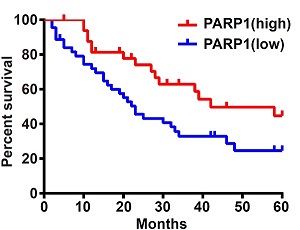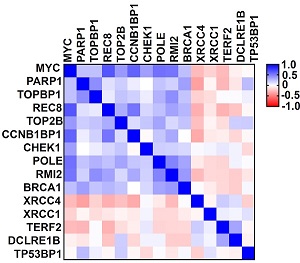
To identify new potential therapeutic targets for small cell lung cancer (SCLC), Prof. LIN Wenchu and his doctoral student BIAN Xing from the High Magnetic Field Laboratory, Hefei Institutes of Physical Science examined the association between MYC paralogs and Poly (ADP-ribose) polymerase 1(PARP1) which were highly expressed in SCLC.
Their findings revealed a new treatment strategy, basing on synthetic lethality, could be applied to achieve the personalized treatment of SCLC.
Synthetic lethality is a lethal phenomenon in which the simultaneous mutation of two genes results in cell death, whereas the perturbation of one alone is tolerable for cell survival. SCLC is a high-grade neuroendocrine carcinoma that accounts for over 250,000 annual cases worldwide. The development of novel therapeutic strategies to expand SCLC treatment options is a pressing need to improve clinical outcomes.
In this research, the researchers demonstrated that DNA damage response (DDR) genes involved in the replication stress response and homologous recombination repair pathways were highly enriched in MYC paralog-addicted SCLC cell models and in human SCLC specimens. Targeting the MYC paralog-PARP1 axis with concomitant BET and PARP inhibition resulted in synthetic lethality effects in MYC paralog-activated SCLC.
The study identifies a critical PARP1 regulatory pathway, and provides evidence for a rational combination treatment strategy for MYC paralog-activated SCLC.
This investigation was supported by National Natural Science Foundation of China, Science and Technology Major Project of Anhui Province. A portion of this work was supported by the High Magnetic Field Laboratory of Anhui Province.


Figure 1. PARP1 expression could serve as a prognostic marker and DDR genes were positively correlated with the expression of MYC and PARP1 (Image by HMFL)

Figure 2. Dual inhibition of MYC and PARP led to synthetic lethality effects in SCLC through interference with the DDR network (Image by HMFL)

86-10-68597521 (day)
86-10-68597289 (night)

52 Sanlihe Rd., Xicheng District,
Beijing, China (100864)

